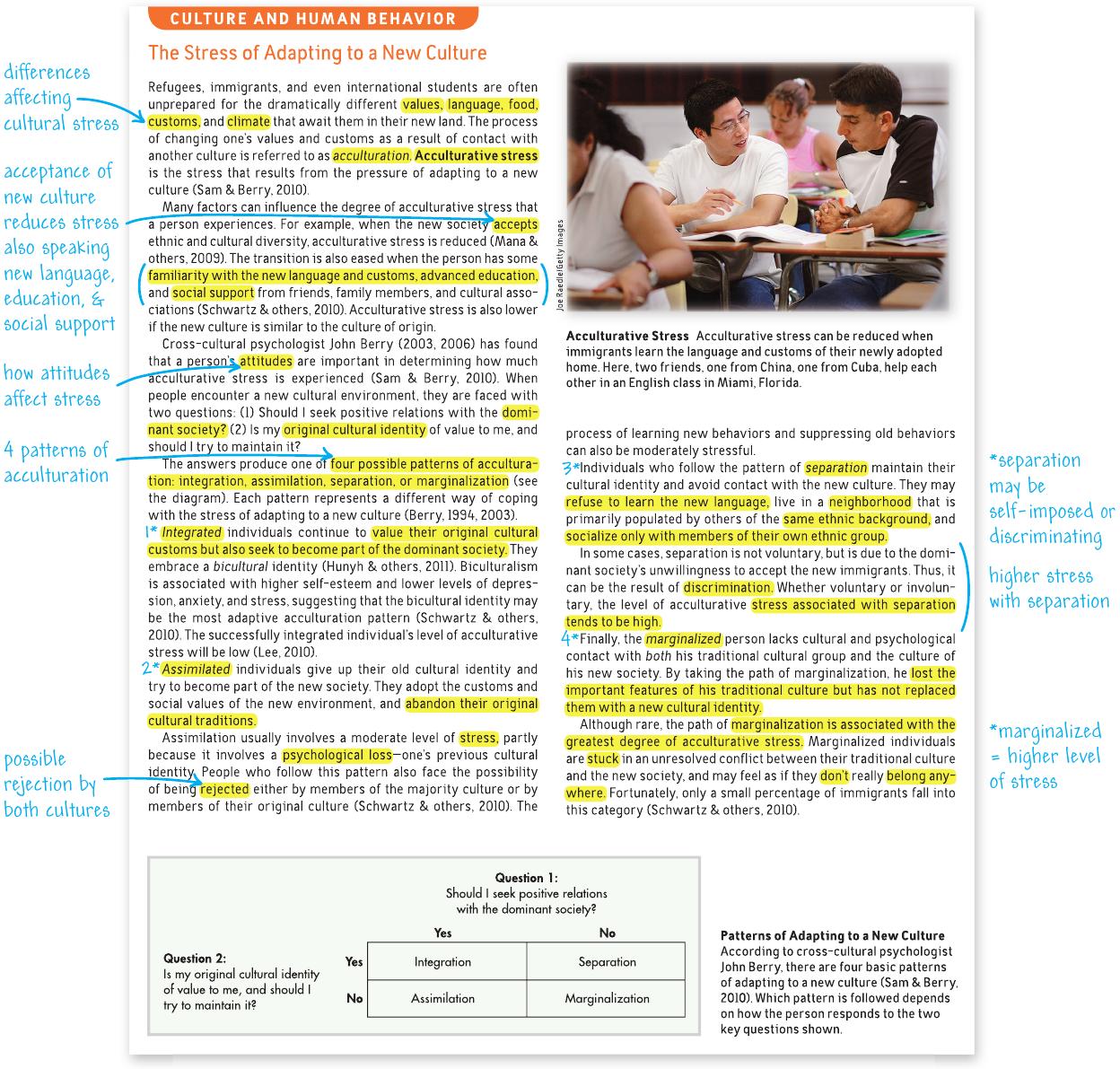Strategies for Marking Your Textbook
After completing your preview, you are ready to read the text actively. With your map or outline to guide you, mark the sections that are most important. To avoid marking too much or marking the wrong information, first read without using your pencil or highlighter.
marking An active reading strategy of making marks in the text by underlining, highlighting, or writing margin notes or annotations.
Marking can be an active reading strategy that helps you focus and concentrate as you read. You may prefer to underline, highlight, or use margin notes or annotations. Figure 6.3 provides an example of each method. No matter what method you prefer, remember these two important guidelines:
- Read before you mark. Finish reading a section before you decide which are the most important ideas and concepts.
- Think before you mark. When you read a text for the first time, everything can seem important. After you complete a section, reflect on it to identify the key ideas. Ask yourself: What are the most important ideas? What will I see on the test? This step can help you avoid marking too much material.
Source: “The Stress of Adapting to a New Culture,” from Psychology, 6th ed., p. 534, by D. H. Hockenbury and S. E. Hockenbury. Copyright © 2013 by Worth Publishers. Used with permission of the publisher.

Two other considerations might affect your decisions about textbook marking:
- If you just make notes or underline in your textbook, you will have to read all the pages again. Instead, consider taking notes, creating flash cards, making lists, or outlining textbook chapters. These methods are also more practical if you intend to review with a friend or study group.
- Highlighting or underlining can give you a false sense of security. Just noting what’s most important doesn’t mean that you understand the material. When you force yourself to put something in your own words while taking notes, you are not only predicting exam questions but also assessing whether you can answer them. Although these active reading strategies take more time initially, they can save you time in the long run because they promote concentration and make it easy to review.